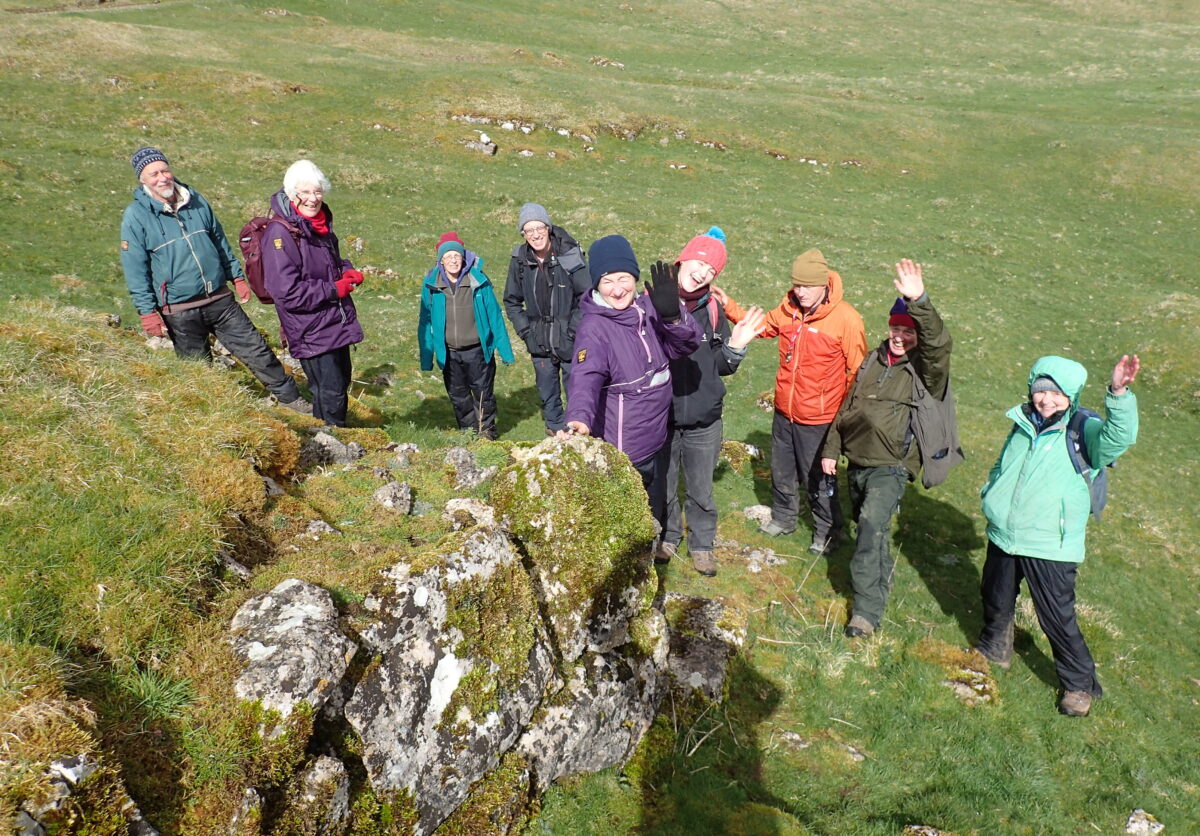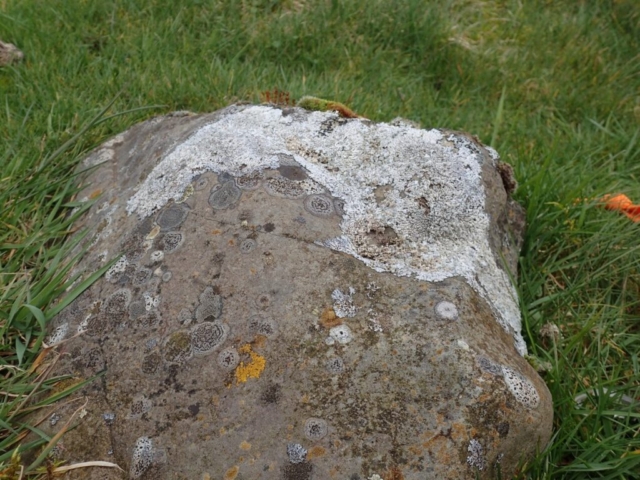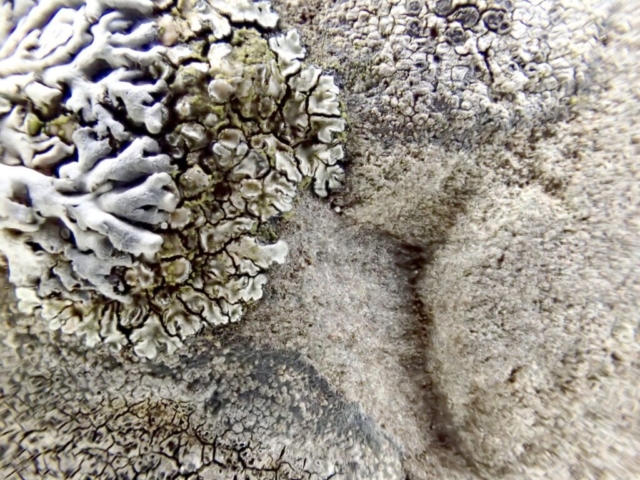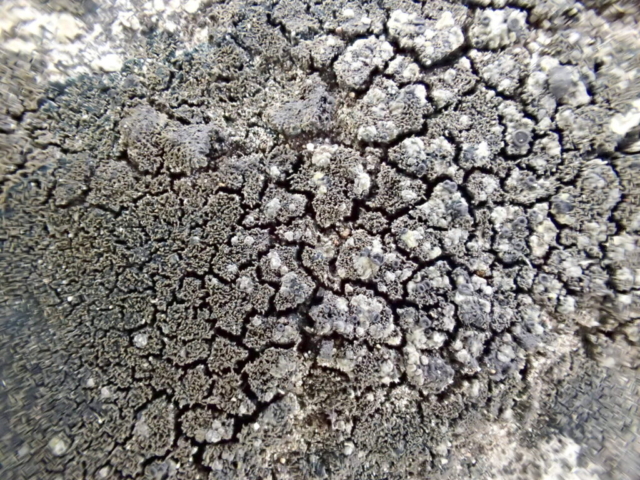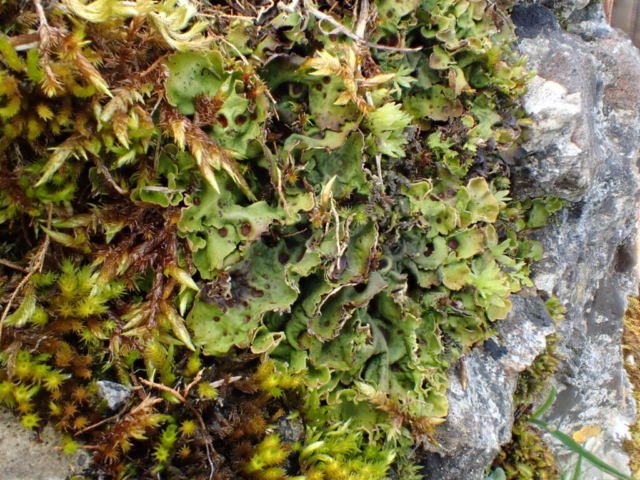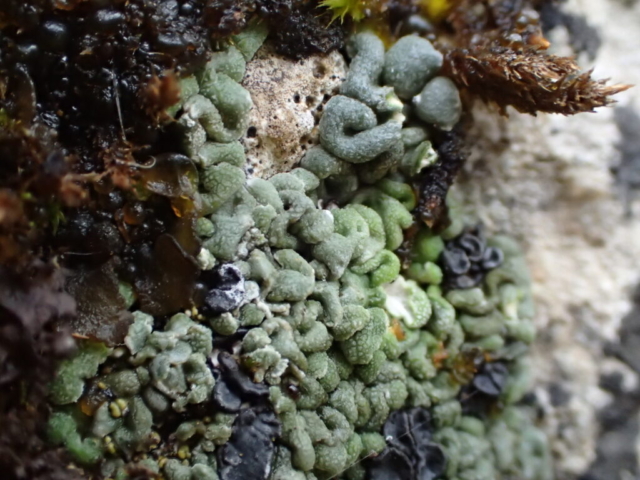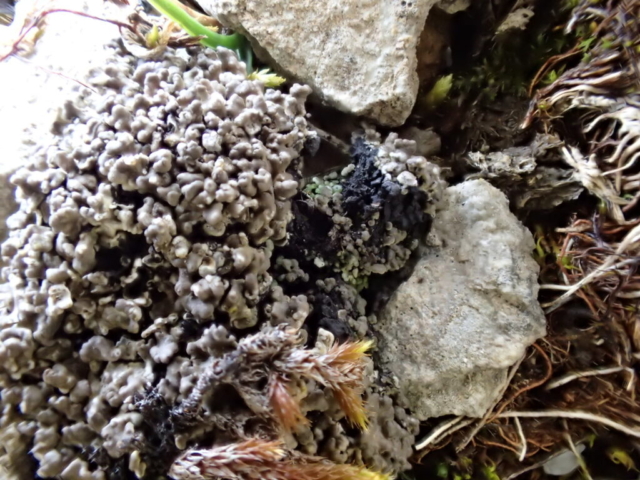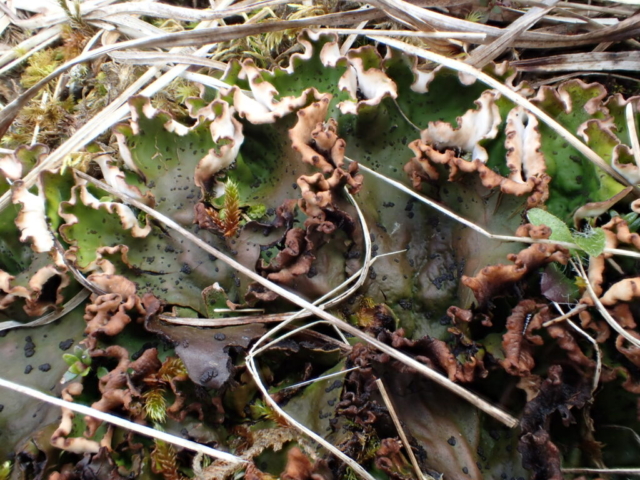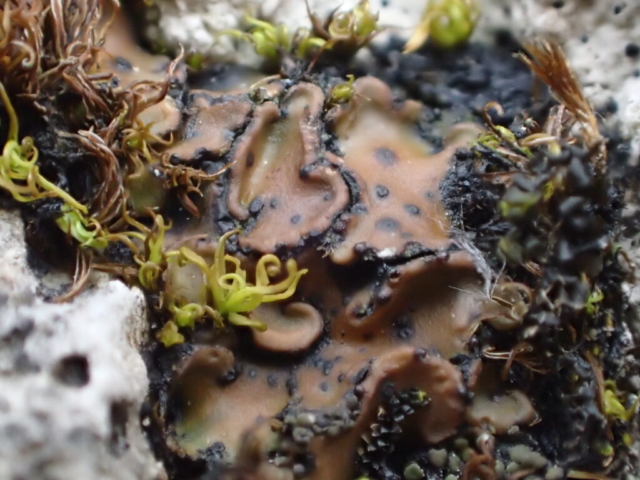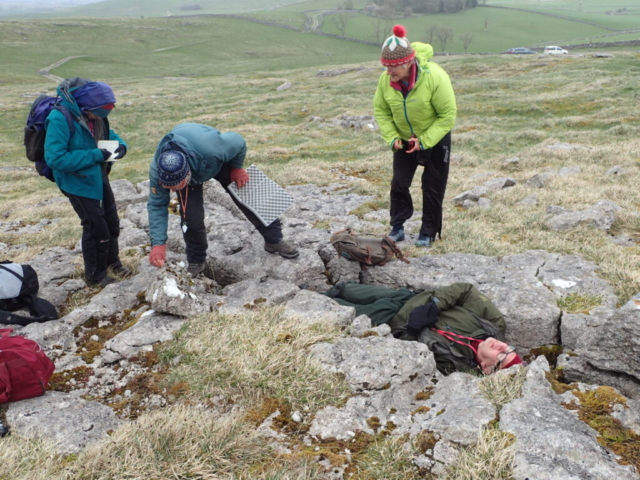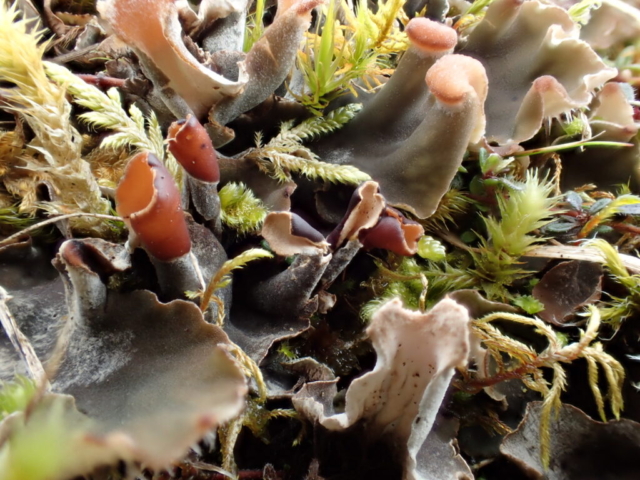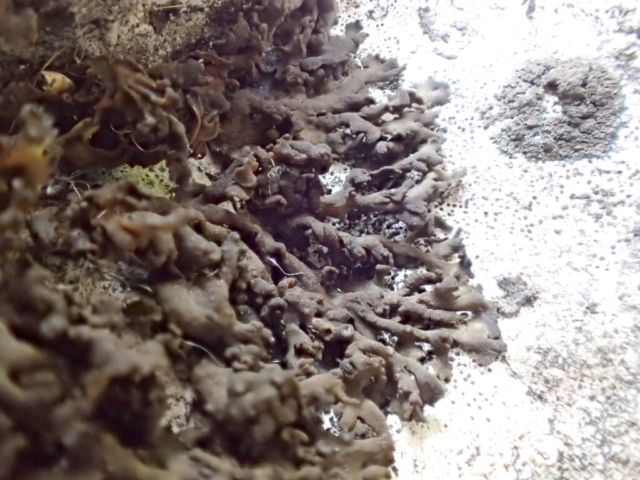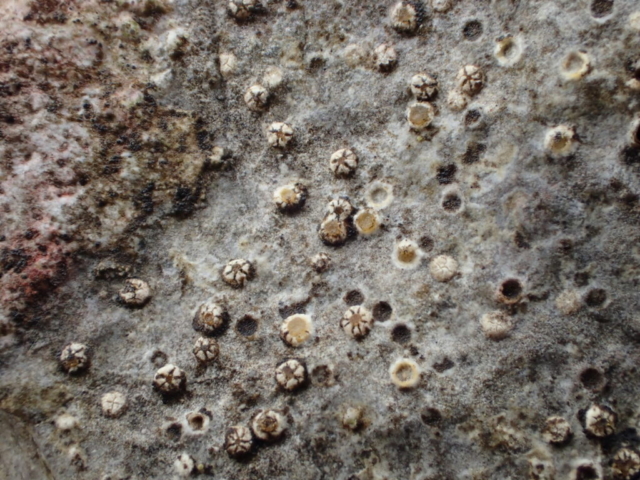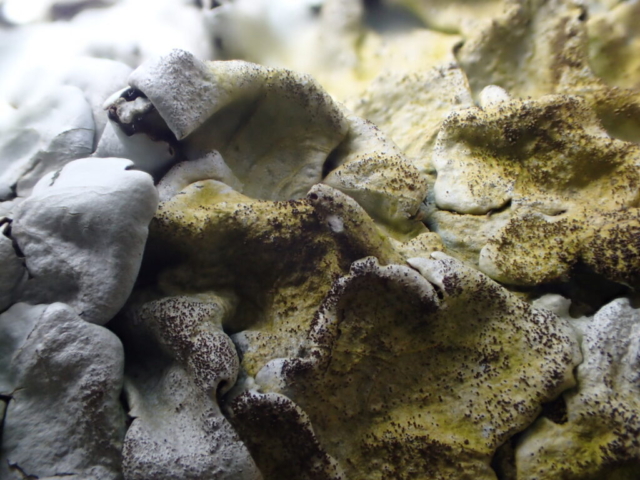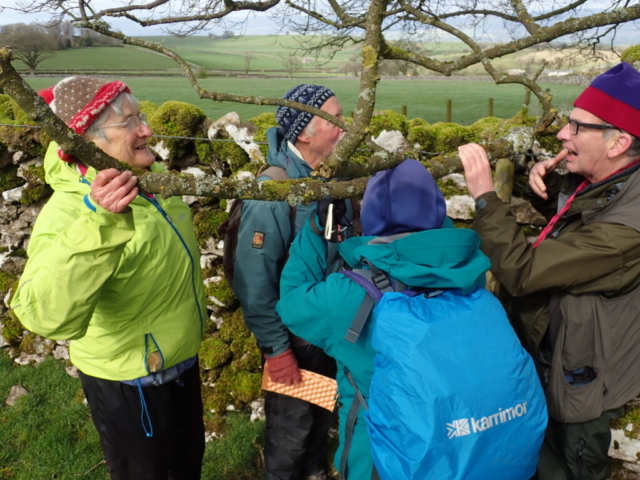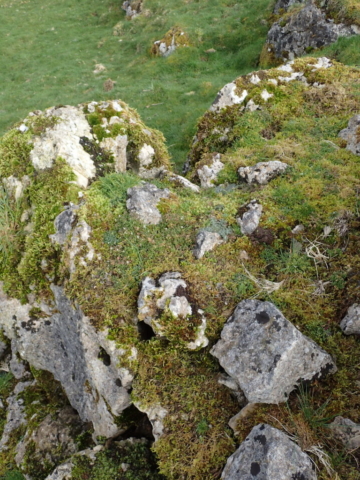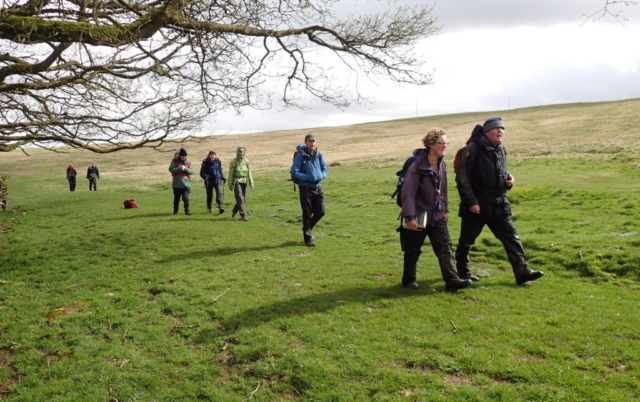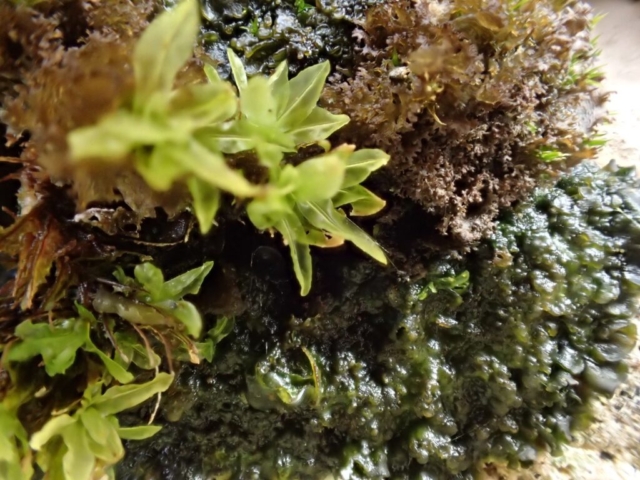As a Yorkshire person from Craven, used to seeing Cumbria from a distance, I am really pleased to occasionally join the Cumbria group, and they make me very welcome.
Today’s visit was to Little Asby Common. A plateau of Carboniferous limestone grassland at about 320m with very thin soil, and with stretches of limestone pavement and thinly grassed over slabs where pavement had been removed in the past. It was April and heads of Blue Moor-grass were bobbing in the wind. A dry stone wall separates the common land from the farmland at Little Asby to the east. A copse of about 10 trees next to that wall break up the otherwise locally treeless landscape. I see from the website the group visited Sunbiggin Tarn 3 miles away in August 2022, on a very, very hot dry day during the “Frank Dobson month”. A contrast to today’s cold and windy April showers weather, but we did have cheerful sun in the morning.
The 8 bryologists were setting off to Ewe Fell Mire before I had even tied my shoelaces. We 10 Lichenologists settled for surveying land nearer at hand. Two absolute beginners, three beginner-intermediates and maybe the other five of us as intermediates. Chris informed us that so far only one species had been recorded in this 1 km square.
First the stone wall at the boundary of the common land. We didn’t find anything rare, but it is a good starting point – the wall is nearly all limestone but with a very few siliceous stones (erratics) to increase the species list. And very civilised to be looking at things at nose height. No bending. The wooden posts at the cattle grid provided Micarea lignaria ; and Fuscidea lightfootii.
Then we walked west across the road towards a depression/dry valley.
There were views across the Eden Valley towards the North Pennine escarpment with a view up what they said is Scordale (High Cup Nick is a bit further north, and was hidden by a hill with trees between us). To the right of the picture, and behind is Mickle Fell.

I got side-tracked by a small 30cm long siliceous rounded boulder with at least 20 species, which I got the others to look at on the way back: Maybe nothing special, but they add to the list:- Physcia caesia on the top was growing over Rhizocarpon reductum with its concentric rings of black apothecia. Neighbouring circular thalli with much smaller dark apothecia in a mosaic: was this Buellia aethalea? Yes, it turned orange with K. Protoparmeliopsis muralis looking amazingly beautiful for such a common species. Lots of tiny circular colonies of a yellow Caloplaca which I would call Caloplaca holocarpa.
I caught the others up:
I was delighted when Chris found some Toniniopsis verrucarioides, a parasitic lichen growing on Placynthium nigrum, on a Limestone outcrop buried rock. I have only seen it once before. Good to see it again so I can keep looking out for it and recognise it again. Thirty minutes later whilst the others had settled for lunch, Chris, Caz, Peter and I explored a quarried mound. The rock was a slightly browner colour. There was much less lichen and soil on it. “What’s this lumpy stuff?” I asked. There were lumps of it in crevices sitting amongst more Placynthium nigrum. Yes, looking totally different, it was more Toniniopsis verrucarioides at the little stretch of north facing limestone outcrop which also provided shelter from the wind. They were revelling in Solorina saccata. “What is this beautiful moss?” asked one person – a lime green rounded tuft with shoots with a rosette of 4mm long mat leaves with a very broad tip and the nerve not extending beyond the tip. “Extinguisher Moss” I said “Candle snuff moss” I said, racking my brains to remember the Latin.
One person had to go early so I seized the opportunity to take a group photo whilst we were all here – see above. The sun came out. At lunch time some people had to depart early.
Five of us enjoyed looking at a platform of limestone with Placidiopsis custnani. And Thalloidima sedifolium (formerly Toninia sedifolia) ?
The remaining five progressed to the limestone pavement area in time for it to start raining. – Still only April showers… if somewhat horizontal ones.
Pete found a gryke and submerged himself in it to avoid the pelting rain, which did soon pass.
Caz found four species of Peltigera (membranacea, rufescens, leucophlebia and neckeri). I wish I had seen the Peltigera neckeri.
We enjoyed looking at the Callome multipartita (Collema multipartitum) on the clints.
The afternoon was drawing on. We crossed to the copse of trees. Here we examined the branches that extended over our side of the wall and found various tree species but were especially pleased to find Parmelina tiliacea growing on a sycamore branch.
The Moss people passed us as they were returning from their exploits to the cars. We returned too… having not walked more than 300m in any direction from the cars. And gained a total of over 70 lichen species. A big improvement on the one record that had previously been recorded for that monad.
Post Script: –
After the others had gone I decided to go and get a photograph of the Encalypta streptocarpa (Spiral extinguisher-moss) and one of the Solorina saccata.
Whilst there I discovered patch of Peltigera canina, with its white furry rhizines that grow in a line touching each other at their base.. It was growing less than two metres from where we had been eating lunch.. A fifth Peltigera! It is even in the group photo I took straight after lunch, near where the lady in purple is standing. But it was windy then!! So pleased to have seen it. I think I have only seen it in Scotland before.
Text: Judith Allinson
Photos: Judith Allinson and Chris Cant
